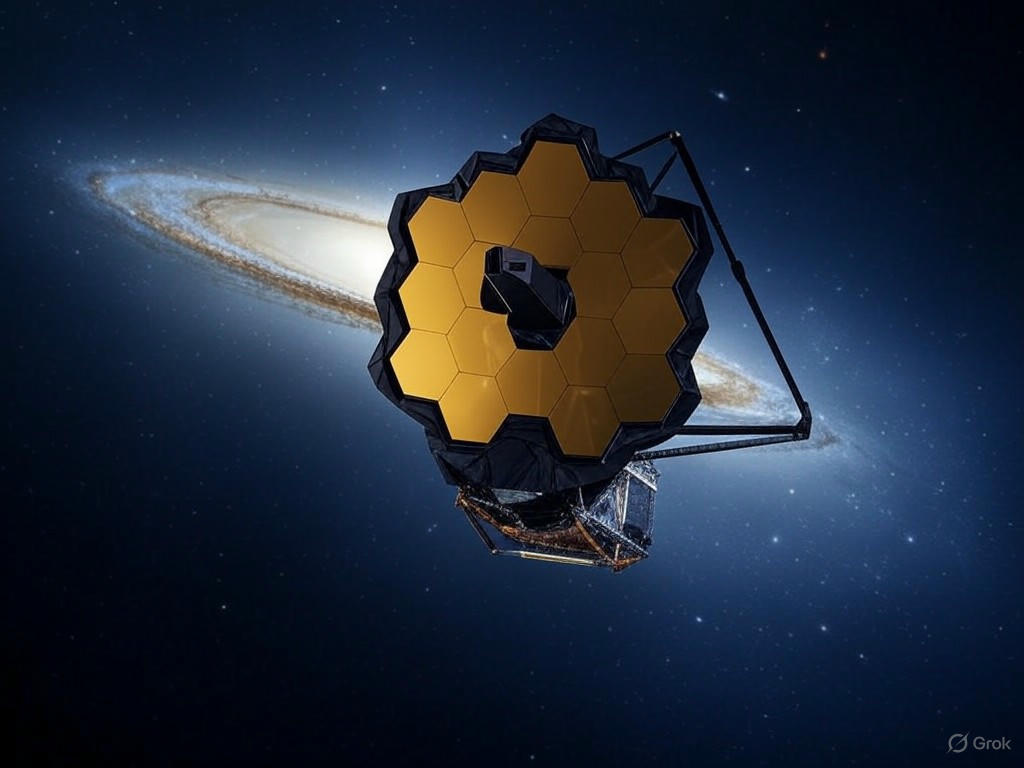The universe never ceases to amaze, and the latest snapshot from the James Webb Space Telescope (JWST) proves just that. This cutting-edge instrument has captured an extraordinary view of the Sombrero Galaxy, a celestial marvel located roughly 29 million light-years from Earth. Known for its distinctive hat-like appearance, with a bright central bulge and a wide, dusty brim, this galaxy has long intrigued astronomers. Now, thanks to JWST’s advanced near-infrared technology, we’re seeing this cosmic wonder in unprecedented detail, uncovering hidden features that deepen our understanding of galactic structures.
At the heart of the Sombrero Galaxy lies a densely packed cluster of stars, a bustling stellar metropolis that glows with an intense light. The JWST’s latest images reveal this central region with stunning clarity, showcasing a concentration of stars that hints at the galaxy’s complex evolutionary history. Scientists believe this tight-knit stellar core could be the remnant of ancient cosmic collisions or the result of dynamic gravitational forces shaping the galaxy over billions of years. Beyond the core, the telescope’s sensitive instruments have also detected intricate patterns of dust along the galaxy’s outer edges. These dusty lanes, often obscured in visible light, appear as delicate, shadowy tendrils in the infrared spectrum, offering clues about the raw materials that fuel star formation in such distant systems.
What makes this observation particularly exciting is how it adds to our broader knowledge of galactic morphology. The Sombrero Galaxy, with its unusual mix of spiral and elliptical features, stands as a puzzle in the cosmic catalog. Its wide, flat disk and prominent dust ring suggest a spiral heritage, while its massive central bulge resembles the structure of an elliptical galaxy. By peering beneath the galaxy’s metaphorical brim, JWST is helping astronomers piece together the story of how such hybrid galaxies form and evolve. Could the dust and stellar density point to a past merger with another galaxy? Or do they reflect unique conditions in the early universe? Each new image brings us closer to answers, while also sparking fresh questions about the forces that sculpt the cosmos.
As we marvel at these revelations, it’s worth reflecting on the technological triumph behind them. The James Webb Space Telescope, humanity’s most powerful eye in space, continues to push the boundaries of what we can see and understand. Its ability to capture infrared light allows us to look through cosmic veils of dust and gas, revealing hidden wonders like those in the Sombrero Galaxy. With each observation, we’re not just gazing at distant objects but peering into the past, witnessing the universe as it was millions of years ago. This latest portrait of a galactic hat is more than a pretty picture—it’s a window into the intricate dance of stars, dust, and time that defines our cosmic neighborhood, inspiring awe and curiosity for generations to come.
